
Bexhill-on-Sea is a seaside town and civil parish in the Rother District in the county of East Sussex in South East England. It is located along the Sussex Coast and between the towns of Hastings and Eastbourne.
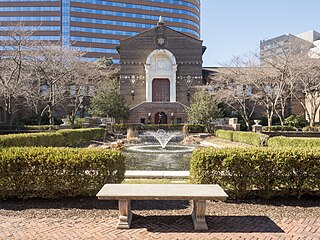
Penn Museum, formally known as The University of Pennsylvania Museum of Archaeology and Anthropology, is an archaeology and anthropology museum at the University of Pennsylvania. It is located on Penn's campus in the University City neighborhood of Philadelphia, at the intersection of 33rd and South Streets. It also is close enough for Drexel University students to walk or take SEPTA transportation services. Housing over 1.3 million artifacts, the museum features one of the most comprehensive collections of Middle and Near-Eastern art in the world.
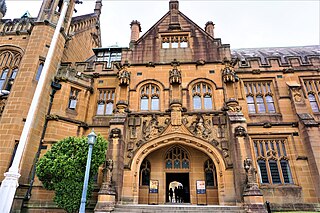
The Nicholson Museum was an archaeological museum at the University of Sydney home to the Nicholson Collection, the largest collection of antiquities in both Australia and the Southern Hemisphere. Founded in 1860, the collection spans the ancient world with primary collection areas including ancient Egypt, Greece, Italy, Cyprus, and the Near East. The museum closed permanently in February 2020, and the Nicholson Collection is now housed in the Chau Chak Wing Museum at the University of Sydney, open from November 2020. The museum was located in the main quadrangle of the University.

Manchester Museum is a museum displaying works of archaeology, anthropology and natural history and is owned by the University of Manchester, in England. Sited on Oxford Road (A34) at the heart of the university's group of neo-Gothic buildings, it provides access to about 4.5 million items from every continent. It is the UK's largest university museum and serves both as a major visitor attraction and as a resource for academic research and teaching. It has around 430,000 visitors each year.
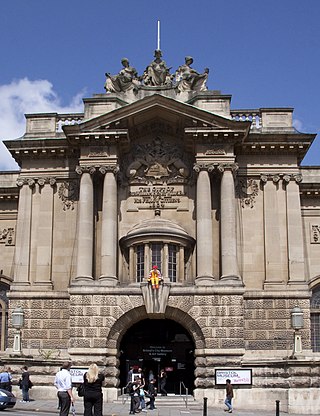
Bristol Museum & Art Gallery is a large museum and art gallery in Bristol, England. The museum is situated in Clifton, about 0.5 miles (0.8 km) from the city centre. As part of Bristol Culture it is run by the Bristol City Council with no entrance fee. It holds designated museum status, granted by the national government to protect outstanding museums. The designated collections include: geology, Eastern art, and Bristol's history, including English delftware. In January 2012 it became one of sixteen Arts Council England Major Partner Museums.

Varendra Museum is a museum, research centre, and popular visitor attraction at the heart of Rajshahi and maintained by Rajshahi University in Bangladesh. It is considered the oldest museum in Bangladesh. It was the first museum to be established in East Bengal in 1910. The museum started out as the collection for Varendra Anushandan Samiti and got its current name in 1919. The Rajahs of Rajshahi and Natore, notably prince Sharat Kumar Ray, donated their personal collections to Varendra Museum. Varendra refers to an ancient Janapada roughly corresponding to modern northern Bangladesh.

The Petrie Museum of Egyptian Archaeology in London is part of University College London Museums and Collections. The museum contains 80,000 objects, making it one of the world's largest collections of Egyptian and Sudanese material. It is designated under the Arts Council England Designation Scheme as being of "national and international importance".
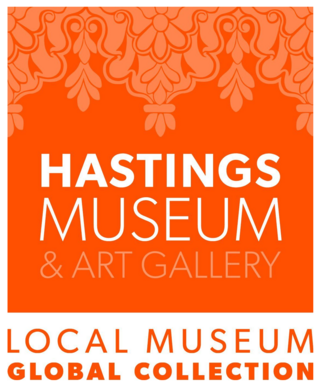
Hastings Museum & Art Gallery is a museum and art gallery located in, Hastings, East Sussex, England. Established in 1892, it originally resided in the Brassey Institute, but moved to its current location in 1927. As of 2019 it had around 97,000 objects of local history, natural sciences, fine and decorative arts, and world cultures.

Maidstone Museum is a local authority-run museum located in Maidstone, Kent, England, featuring internationally important collections including fine art, natural history, and human history. The museum is one of three operated by Maidstone Borough Council. The building is Grade II* listed.

The Museum of Archaeology and Anthropology, also known as MAA, at the University of Cambridge houses the university's collections of local antiquities, together with archaeological and ethnographic artefacts from around the world. The museum is located on the university's Downing Site, on the corner of Downing Street and Tennis Court Road. In 2013 it reopened following a major refurbishment of the exhibition galleries, with a new public entrance directly on to Downing Street.
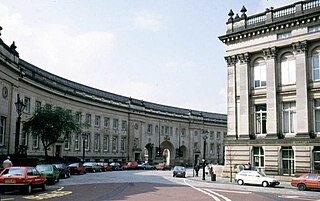
Bolton Art Gallery, Library & Museum is a public museum, art gallery, library and aquarium in the town of Bolton, England, owned by Bolton Metropolitan Borough Council. The museum, Bolton Museum, is housed within the grade II listed Le Mans Crescent near Bolton Town Hall and shares its main entrance with the library, Bolton Central Library, in a purpose-built civic centre.

The Wisbech & Fenland Museum, located in the town of Wisbech in the Isle of Ely, Cambridgeshire, England, is one of the oldest purpose-built museums in the United Kingdom. The museum logo is W&F.
The Mary Rose Trust is a limited charitable trust based in Portsmouth in the United Kingdom. Its primary aims are to preserve, display and spread knowledge about the 16th century warship Mary Rose which sank in the Solent on 19 July 1545 and was salvaged by the Trust in October 1982.

Ilkley Manor House, Ilkley, West Yorkshire, England, is a local heritage museum, art gallery, and live venue, and was established in the present building in 1961 to preserve local archaeological artefacts after the spa town expanded and much Roman material was lost. It was managed by Bradford Council Museums and Galleries department but had to be closed in 2013 owing to lack of funds. In order to keep the building open to the public, the Ilkley Manor House Trust was formed, and in April 2018, Bradford Council transferred the Manor House and three adjacent cottages to the Trust as a community asset transfer.

Cliffe Castle Museum, Keighley, West Yorkshire, England, is a local heritage museum which opened in the grand, Victorian, neo-Gothic Cliffe Castle in 1959. Originating as Cliffe Hall in 1828, the museum is the successor to Keighley Museum which opened in Eastwood House, Keighley, in c. 1892. There is a series of galleries dedicated to various aspects of local heritage, and to displaying the house itself, which is a Grade II listed building.

The Higgins Art Gallery & Museum is the principal art gallery and museum in Bedford, Bedfordshire, England, run by Bedford Borough Council and the trustees of the Cecil Higgins Collection.
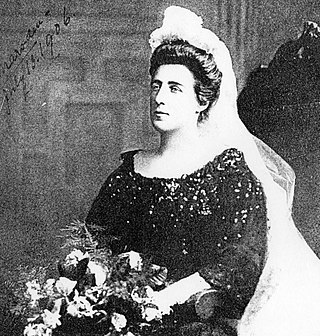
Kate Marsden was a British missionary, explorer, writer and nurse. Supported by Queen Victoria and Empress Maria Feodorovna she investigated a cure for leprosy. She set out on a round trip from Moscow to Siberia to find a cure, creating a leper treatment centre in Siberia.

Haslemere Educational Museum was founded in 1888 by the eminent surgeon Sir Jonathan Hutchinson to display his growing collection of natural history specimens. After two moves it found in 1926 a permanent home in Haslemere High Street, in the town of Haslemere, Surrey, England.

Margaret Louise Furey is a New Zealand archaeologist. Formerly a consulting archaeologist, she is now Curator of Archaeology at Auckland War Memorial Museum.
Abeer Eladany FSAScot is a Cairo born Egyptologist and archaeologist. She has a particular interest in human remains, the history of Egyptology and museology with a particular focus on ethics and repatriation and making museum collections accessible. She is known for her work in Egyptology, particularly for finding a fragment of wood from Great Pyramid of Giza in the University of Aberdeen's collection in 2021.


























